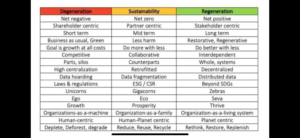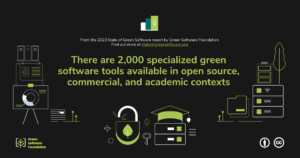In my youth, I was lucky enough to study science, specifically Genetics. My thesis was about the change in populations due to natural drift – assuming a small rate of random mutation and some selection pressure. Selection pressure is what we would probably describe as “something going wrong” but it can also be a simple filter. Using a Darwinistic approach allows us to evaluate and iterate on a problem. What we are trying to achieve is “whatever can happen, will happen”. That’s the basis of Evolution and has led to a dizzying array of biodiversity in the natural world.
Mathematician Augustus De Morgan wrote on June 23, 1866: “The first experiment already illustrates a truth of the theory, well confirmed by practice, what-ever can happen will happen if we make trials enough.” In later publications “whatever can happen will happen” occasionally is termed “Murphy’s law”, which raises the possibility — if something went wrong—that “Murphy” is simply “De Morgan” misremembered.
The thing to remember about Evolution (and by extension Darwinistic Natural Selection) is that the possibilities generated must come before the selection pressure or nothing survives the selection filter. If the organism doesn’t survive to reproduce, then the line ends. The bank of possibilities must be there already.
This translates into “innovation” easily. An organisation must populate itself with a wide heterogeneity of minds in order to generate the ideas (the fundament of innovation) with sufficient diversity that can survive the selection pressure filter. The ideas should not initially be fettered by the selection pressure criteria (otherwise every problem that looks like a nail results in a solution that resembles a hammer).
After the ideation is complete (though, in truth, ideation and iteration should never stop – just like cell mutation), the selection filter can be applied. Ideas which don’t at first make the grade should be subjected to further iteration before they can be discarded. Only this way can you have a truly Darwinistic natural selection.
Natural selection in this way resulted in modern humans – but also resulted in pilot whales, baboons, golden eagles and bumblebees. Each of them adapted to the niche they occupy. If you apply your selection pressure with the single-minded aim of producing something that looks like a human, you’ll miss out on the entirely practical solutions that resemble bees, monkeys, birds and dolphins. In business terms, this means discarding every solution that doesn’t resemble “we have always done it this way”. What happens to organisms that discard new things? They die out.
We are in an unprecedented era with worldwide biodiversity loss. Organisms are simply unable to adapt to the new way of the world quickly enough. Evolution is simply too slow. Unfortunately for us, we are part of that. Humans are tremendously adaptable – mostly due to our brains and the technologies we develop – but it would be arrogant to assume that we are not under selection pressure right now. Humans continue to evolve but, like our counterparts in nature, we will not evolve quickly enough and, due to the way natural selection works, many of us won’t make it. The Selection Pressures of a changing climate (whether you think it is man-made or not is somewhat irrelevant) are presenting new challenges that we need new ideas to resolve.
Our technology may save us, but we are only fielding ideas that look like old ideas, under the same selection pressures. Great ideas (the baboons, bumblebees, eagles and whales) are discarded because the selection criteria are not fit for purpose. The Legacy pressures from “we have always done it this way” obstruct the effective solutions by discarding innovative ideas.
for example
Statement: We need food to survive
Selection Pressure: Food is not distributed equally
Legacy Pressure: We must grow food for profit not to resolve hunger
Result: A lot of people starve to death but we generate some value for shareholdersStatement: We need food to survive
Selection Pressure: Food is not distributed equally
Legacy Pressure: Only solutions resembling beef steaks will be considered
Result: A lot of people starve to death, but some people get steak
As you can see, Legacy pressures are artificial selection pressures. They limit innovation, they hinder success. They leave us without workable solutions and instead present us with short term distractions that bring us no closer to the result we need (avoiding mass extinction).
We have the opportunity to generate all of the ideas we need before the real selection pressure starts. But we have to rid ourselves of Legacy pressures.


